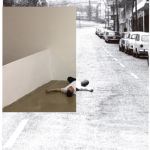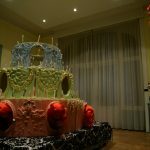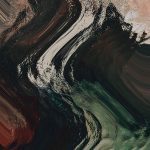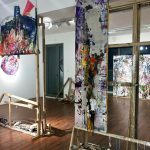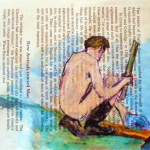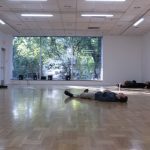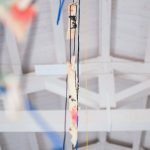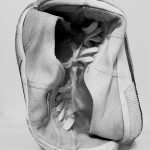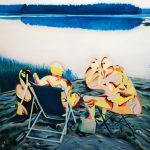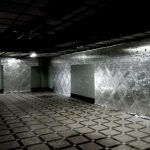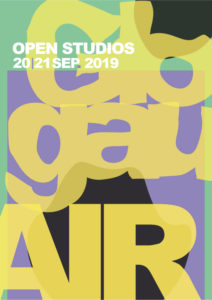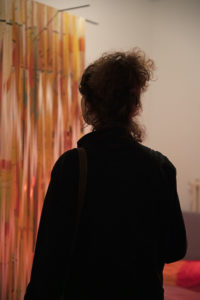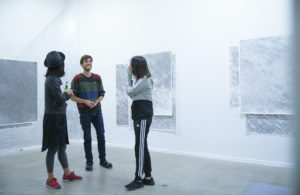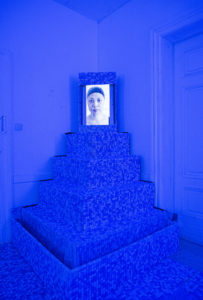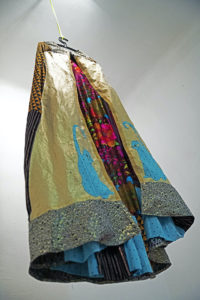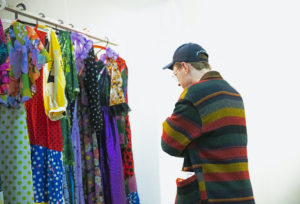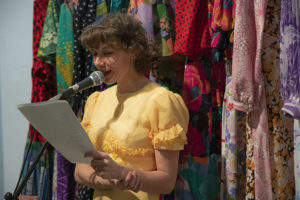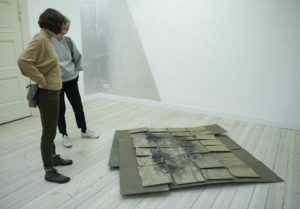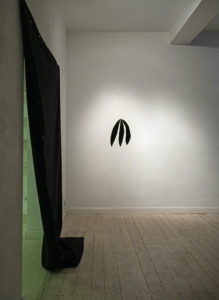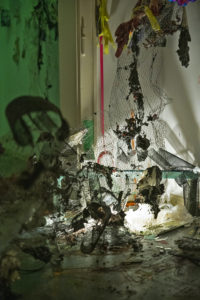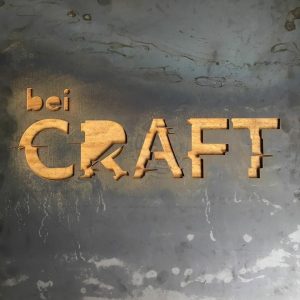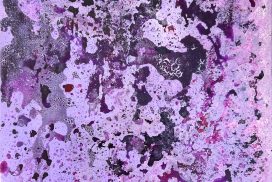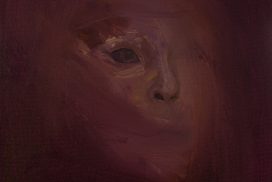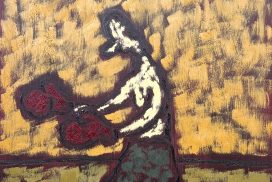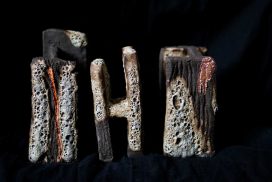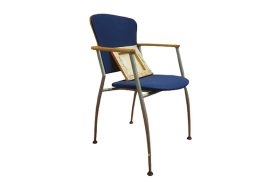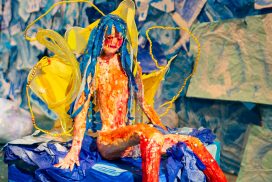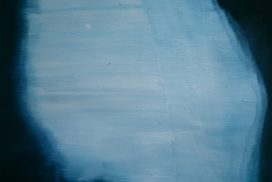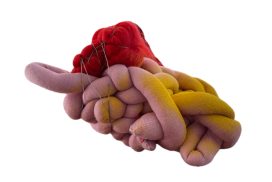Beginning on the first floor, Shae Gregg gives disregarded found objects a new purpose. By using them as canvas or in mixed media works, she breathes new life into these objects, while at the same time using the public space as a form of gallery. Ben Glas questions preconceived notions between passive and active participation, collapsing the difference between hearing and listening in his sound installations. Printmaker, roboticist, and researcher all in one, Malcolm Smith is building a prototype for Plague of Rats; a performative installation of robotic ‘rats’ designed to swarm through museum spaces. Working intensively in her studio, Marie Hendriks tells us childhood stories as peculiar moments of everlasting enchantment, irrational fears and loss of blind trust in appearances. Daniela Schwabe has deepened her research into the historical background of the Cold War and specific themes like manufactured copies, repetition, fragmentation and the representation of the image in general.
Venturing up to the second floor, we arrive at the studio of Jit Seo who has been working on an installation that explores the material property of paintings and prints. Paula Elion deals with the dialectics of memory and loss, hope and kindness. Intentionally juxtaposing two vividly distinct German narratives, she contrasts the tragic figure of Magda Goebbels, who was thought to have embodied the perfect Aryan (beauty, loyalty, and motherhood) during Nazi dictatorship, with a group of refugees in Kassel today, and their new life in a democratic Germany. Laura Palau’s project Las bañistas documents what happens in the women’s fitting rooms of different swimming pools. The purpose of the project is to observe and document what happens there with the aim of showing and preserving one of the few women-only spaces that remain in today’s society. With the tradition of romantic landscape painting in mind, Bas Ketelaars starts with his own experience of walking through empty landscapes and translates this experience to the contemplation of objects through a meticulous process of repeated graphite inscriptions and erasures on paper. Mark Son is interested in the intrinsic nature of contemporary art as a transformation of space or a virtual space. For Open Studios, he treads that line between invisible and visible, using the traces and marks in space to create a detailed historiography.
Inhee Yang has created a site-specific working process directly related to her experience here at GlogauAIR. Mabi(paralyze)-Berlin, was inspired by a showcase display that made use of changing amounts of light during the day and night, and is artificially installed indoors. For Open Studios, she continues this experimental process of contrasting day and night, inside and outside, and opening and closing. In his work, Nicolò Brezza reveals the conventional elements of painting that are reviewed and reassembled in order to alienate and disembody painting itself. Abandoning artistic identity is at the core of his creative process as he allows spontaneous mechanisms and chance to intervene in the creation of the final artwork itself.

